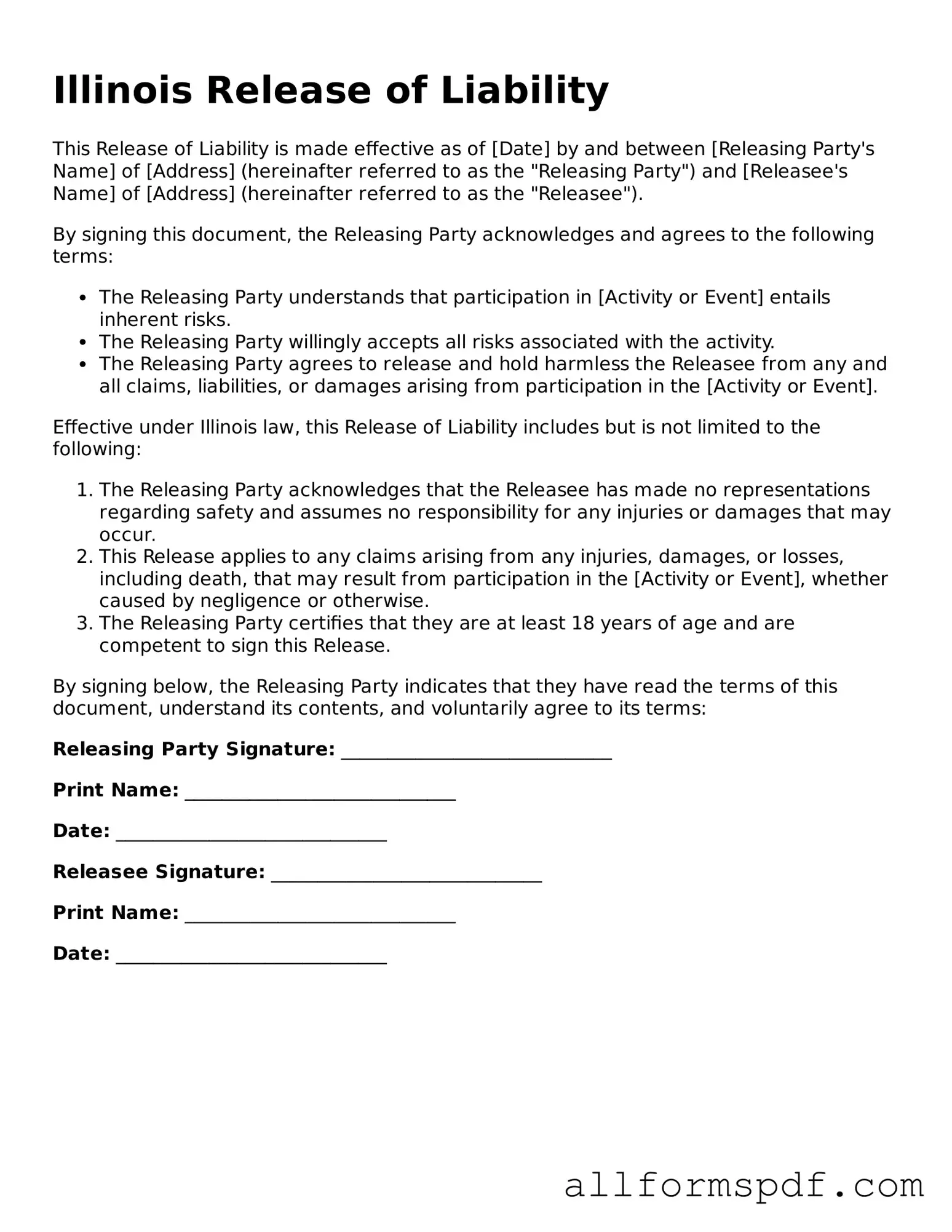When individuals fill out the Illinois Release of Liability form, they often overlook key details that can significantly affect their rights and responsibilities. One common mistake is failing to read the entire document thoroughly. It is essential to understand the implications of signing the form, as it may waive certain rights, including the right to sue for negligence. Ignoring the fine print can lead to unexpected consequences.
Another frequent error is not providing accurate personal information. Individuals sometimes rush through the form, neglecting to double-check their name, address, and contact details. Inaccurate information can create complications if any issues arise later, as it may hinder communication or lead to misunderstandings.
Many people also underestimate the importance of specifying the activities covered by the release. A vague description can leave room for interpretation, which may not be in the signer's favor. Clearly outlining the activities helps ensure that both parties understand the scope of the release, reducing the potential for disputes.
Moreover, some individuals fail to consider the implications of signing on behalf of minors. When parents or guardians sign a release for a child, they must understand that they are accepting liability on behalf of the minor. This responsibility can be significant, and it is crucial to be fully aware of what it entails.
Additionally, people often neglect to seek legal advice before signing the form. While it may seem unnecessary, consulting with a legal professional can provide valuable insights into the document’s implications. This step can help individuals make informed decisions, ensuring they are fully aware of their rights and obligations.
Another mistake involves overlooking the date of signing. Leaving the date blank can create confusion regarding the effective date of the release. It is vital to fill in the date accurately, as it establishes when the agreement takes effect and can affect the enforceability of the document.
Lastly, many individuals do not keep a copy of the signed form for their records. Retaining a copy is crucial, as it serves as proof of the agreement and can be referenced in case of disputes. Without a copy, individuals may find themselves at a disadvantage if questions arise about the terms of the release.
